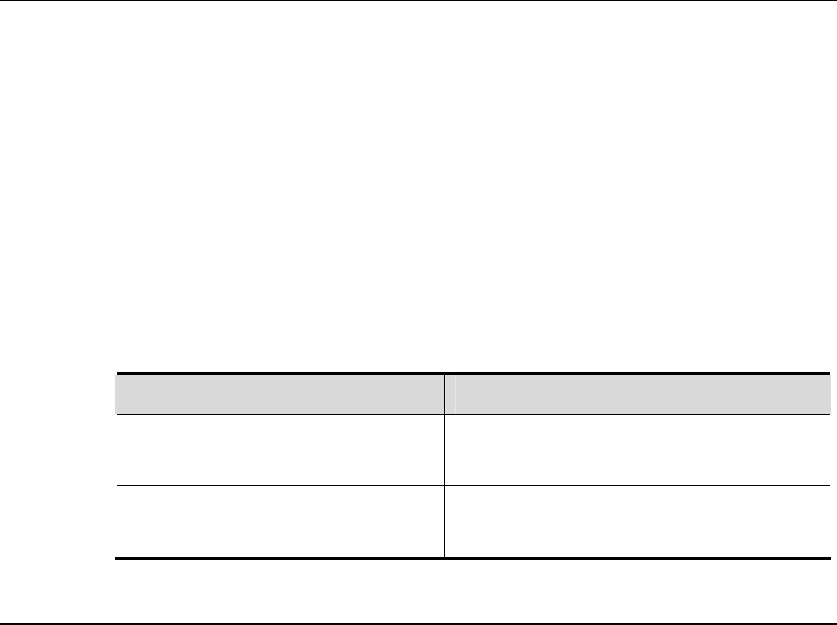
DES-7200 Configuration Guide Chapter 4 OSPF
Configuration
4-11
packets with the designated router and backup designated routers, and then the
designated router notifies all routers. As a result, each router can keep a
consistent link status database.
You can control the election of the designated router by setting the OSPF priority.
The parameter does not take effect immediately until in the new round of election.
The new election of the designated router occurs only when the OSPF neighbor
doesn’t receive the Hello message from the designated router within the specified
time and consider the DR is down.
To configure the broadcast network type, execute the following commands in the
interface configuration mode:
Command Function
DES-7200 (config-if)# ip ospf
network broadcast
Specify the type of the interface to be the
broadcast network type.
DES-7200 (config-if)# ip ospf priority
priority
(Optional) Specify the priority of the interface.
4.2.4 Configuring the OSPF Area Parameters
To configure area authentication, stub area, and default route summary cost, you
need to use the command for configuring the areas.
Area authentication is configured to avoid the learning of non-authenticated and
invalid routes and the advertisement of invalid routes to the non-authentication
routers. In the broadcast-type network, area authentication can also prevent
non-authentication routers from becoming the designated routers for the stability
and intrusion prevention of the routing system.
When an area is the leaf area of the OSPF area, orthe area neither acts as the
transit area nor injects external routes to the OSPF area, you can configure the
area as a stub area. The routers in a stub area can only learn about three routes,
namely, 1) Routes in the stub area, 2) Routers in other areas, and 3) Default
routes advertised by the border router in the stub area. For there is few external
routes, the route tables of the rotuers in the stub area are small, saving resources.
So the rotuers in the stub area may be low- or middle-level of routers. To reduce
the number of the Link Status Advertisements (LSA) messages sent to the stub
areas, you can configure the area as the full stub area (configured with the
no-summary option). The routers in a full stub area can learn two types of routes:
1) routes in the stub area; 2) default routes advertised by the border router in the
stub area. The configuration of the full stub area allows the OSPF to occupy the
minimized router resources, increasing the network transmission efficiency.
If the routers in a stub area can learn multiple default routes, you need to set the
costs of the default routes (by using the area default-cost command), so that


















